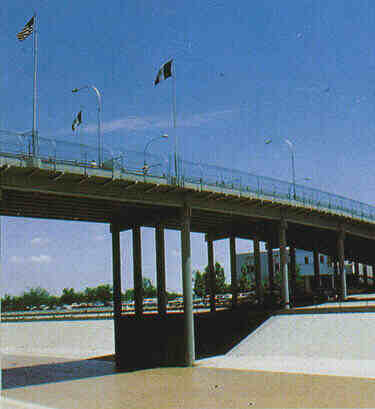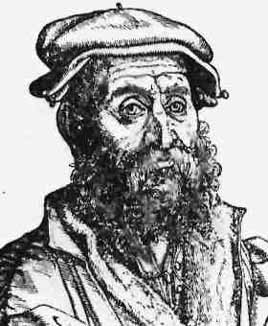| 1972 Vietnam peace negotiations
deadlocked In Paris, peace negotiations are hopelessly deadlocked after a six-hour meeting between North Vietnamese negotiator Le Duc Tho and US National Security Advisor Henry Kissinger. After the meeting, Kissinger flew to the United States to confer with President Richard Nixon. The main point of contention was who would have political power in South Vietnam if a cease-fire were announced. The North Vietnamese negotiators demanded the following in the case of a cease-fire: the dissolution of the government of South Vietnamese President Nguyen Van Thieu, the disbanding of the South Vietnamese army, and the installation of a coalition government. The US refused to consider the North Vietnamese demands and steadfastly supported Thieu and his government. At the same time, the South Vietnamese were making their own demands. Over 100,000 North Vietnamese troops had occupied territory in South Vietnam during the 1972 Easter Offensive. Nguyen Van Thieu demanded that the North Vietnamese recognize Saigon's sovereignty over South Vietnam, which would make the continued presence of the North Vietnamese troops in the south illegal. The North Vietnamese refused Thieu's demands, saying that they would not recognize Thieu's government and would not remove their troops. They walked out of the negotiations. Nixon issued an ultimatum to Hanoi to send its representatives back to the conference table within 72 hours "or else.” When the North Vietnamese rejected Nixon's demand on December 18, the president gave the order to launch Operation Linebacker II, an intensified bombing campaign of North Vietnam that became known as the "Christmas bombing.” Over the next 11 days--with the exception of Christmas Day--the bombing continued unabated, with an estimated 20,000 tons of bombs dropped over North Vietnam. On December 28, North Vietnamese officials agreed to Nixon's conditions for reopening the negotiations; the next day, the president called an end to Linebacker II. |
1971 La ONU exhorta a los gobiernos de Argentina y Reino Unido a que se busquen una solución definitiva para su disputa por las Malvinas
1968 Artur da Costa e Silva proclama la dictadura militar en Brasil.
| 1968 US-Mexico border rectified President Lyndon B. Johnson and Mexico's President Gustavo Diaz Ordaz meet on a bridge at El Paso, Texas, to officiate at ceremonies returning the long-disputed El Chamizal area to the Mexican side of the border.-- In El Paso, TX, LBJ & Mexican President Gustavo Diaz Ordaz set off an explosion diverting Rio Grande, to reshape US-Mexico border In the 1860's, spring floods on the Rio Grande River, which was the actual United States and Mexico boundary, changed this mighty river's course. This change actually took territory belonging to Mexico and made it U. S. territory. In 1963 the US and Mexico settled this 100-year boundary dispute harmoniously. It is known as the Chamizal Treaty of 1963. In 1967 Mexican President Gustavo Diaz Ordaz and US President Lyndon B. Johnson met in El Paso and Juarez to officially sign the final minutes of the Chamizal Treaty. It officially transferred to Mexico lands that had become part of the US The New Bridge With this treaty, it was necessary to dig a new river in its original state. In order to keep the river from changing again, it was lined with concrete.  Chamizal Boundary Settlement Project
Chamizal Boundary Settlement Project In accordance with the terms of the Convention of 1963 for "Solution of the Problem of the Chamizal," the International Boundary and Water Commission relocated the channel of the Rio Grande between the cities of El Paso, Texas and Ciudad Juárez, Chihuahua. The United States Congress authorized the United States part of this project by the American-Mexican Chamizal Convention Act of April 29, 1964. The project was undertaken in 1966 and completed in 1969. United States President Lyndon B. Johnson and Mexican President Gustavo Diaz Ordaz formally approved the relocation of the international boundary and the transfer of lands as provided for in the Chamizal Convention on October 28, 1967 at a ceremony at the Chamizal Monument in Juárez, Chihuahua. Presidents Johnson and Diaz Ordaz again met in El Paso-Juárez on December 13, 1968 to commemorate completion of the relocated channel and related works provided for in the Convention. The channel was relocated so as to transfer from the north to the south side of the river a total of 630.34 acres (255.09 hectares) and to keep on the north side 193.16 acres (78.17 hectares). The relocation required the joint construction of 4.4 miles (7km) of concrete-lined new channel and construction of three vehicular bridges an two railroad bridges over the new channel. The improved channel also provides the cities of El Paso and Juárez long-needed protection from Rio Grande floods. The two Governments shared the costs equally. The two Governments also share equally the costs of maintaining and operating the new Rio Grande channel between the two cities and maintenance of one vehicular bridge. For the relocation of the river channel and transfer of lands to the Mexican side of the river free of private titles, the United States Government through the United States Section had to acquire some 1200 residential and 186 commercial, as well as industrial and public properties. Also, the Section relocated 11.7 miles (19 km) of railroad facilities and 1.7 miles (3 km) of irrigation canal, and constructed three new port of entry inspection facilities. Of the 193.16 acres (78.17 hectares) ceded by Mexico to the United States: (1) 55 acres (22.26 hectares) are used for a National Park commemorating the settlement of the Chamizal; (2) 60 acres (24.28 hectares) are used for a new high school, Bowie High School; and (3) the remaining 78.16 acres (31.6 hectares) are used for the new United States port of entry facilities at the Bridge of the Americas. As a complementary measure for the City of El Paso, the United States Congress also appropriated funds to cover a part of the cost of construction of a border highway in El Paso, Texas, parallel to the river boundary for a distance of 13 miles (19km). The Mexican Government has developed schools, parks and recreational facilities on lands transferred to Mexico. [Photo: Chamizal boundary settlement channel at El Paso, Texas--Ciudad Juarez, Chihuhua, looking downstream from the United States at the new Paso del Norte Bridge constructed as part of the boundary relocation]. |
 1950
1950
 1557
1557